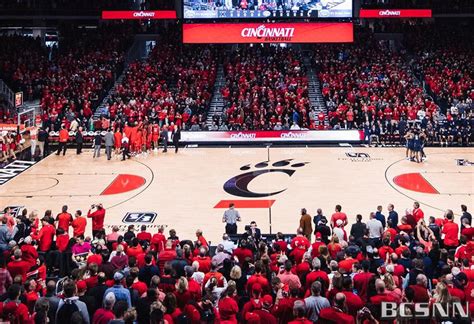The Pac-12 Conference basketball standings are a record of the win-loss records of the 12 member schools in the Pac-12 Conference. The standings are used to determine the seeding for the Pac-12 Tournament, which is the conference’s postseason tournament. The standings are also used to determine the conference’s automatic bid to the NCAA Tournament.
The Pac-12 Conference is one of the most competitive basketball conferences in the country. In recent years, the conference has been represented in the NCAA Tournament by at least four teams, and has had multiple teams reach the Final Four. The Pac-12 Tournament is also one of the most exciting conference tournaments in the country, and often features close games and upsets.
The Pac-12 Conference basketball standings are an important tool for fans of the conference. The standings allow fans to track the progress of their favorite teams and see how they compare to the other teams in the conference. The standings are also used by media outlets to rank the teams in the conference and to predict the outcome of upcoming games.
Pac-12 Basketball Standings
The Pac-12 Conference basketball standings are a crucial aspect of college basketball, providing insights into team performance, tournament seeding, and conference dynamics.
- Conference Race: The standings determine the regular season champion and seeding for the Pac-12 Tournament.
- Tournament Implications: The standings impact teams’ chances of qualifying for and advancing in the Pac-12 Tournament.
- NCAA Tournament Bids: The conference’s automatic bid to the NCAA Tournament is allocated based on the standings.
- Team Rankings: The standings are used by media outlets and fans to rank teams within the conference.
- Player Recognition: The standings influence individual player recognition, such as All-Conference team selections.
- Coaching Performance: The standings reflect the performance of coaches and their ability to lead their teams.
- Recruiting: The standings can influence recruiting efforts, as top prospects often consider conference strength.
- Historical Significance: The standings provide a historical record of team success within the Pac-12 Conference.
- Fan Engagement: The standings generate excitement and foster a sense of competition among fans.
In conclusion, the Pac-12 basketball standings are a multi-faceted aspect of college basketball that encompasses conference competition, tournament implications, individual recognition, and historical significance. They serve as a valuable tool for fans, media, and coaches to assess team performance and navigate the complexities of the Pac-12 Conference.
Conference Race
The conference race is a crucial component of the Pac-12 basketball standings, shaping the landscape of the conference and determining the path to postseason success.
- Regular Season Title: The standings directly determine the regular season champion, a prestigious honor that signifies the team’s dominance throughout the conference schedule.
- Tournament Seeding: The standings also play a pivotal role in seeding teams for the Pac-12 Tournament. Higher-ranked teams receive favorable seeding, increasing their chances of advancing and potentially winning the tournament.
- Home-Court Advantage: The standings influence which teams earn home-court advantage in the Pac-12 Tournament. Home teams often have a significant advantage, creating an even greater incentive for teams to finish high in the standings.
- NCAA Tournament Implications: The Pac-12 Tournament champion earns an automatic bid to the NCAA Tournament, the most prestigious event in college basketball. The standings, therefore, have a direct impact on which Pac-12 team will represent the conference on the national stage.
In summary, the conference race is an integral part of the Pac-12 basketball standings, driving competition, determining postseason positioning, and impacting the NCAA Tournament landscape. It adds excitement and intrigue to the regular season, as teams vie for supremacy and the rewards that come with it.
Tournament Implications
The Pac-12 basketball standings hold significant implications for teams’ success in the Pac-12 Tournament, the conference’s postseason championship. The standings determine which teams qualify for the tournament and their seeding, which can greatly affect their chances of advancing and ultimately winning the title.
- Qualification: The top eight teams in the Pac-12 standings automatically qualify for the Pac-12 Tournament. Teams ranked ninth through 12th participate in a play-in round to determine the final four tournament participants.
- Seeding: The Pac-12 standings determine the seeding for the Pac-12 Tournament. The top four teams receive a double-bye into the quarterfinals, while the remaining eight teams compete in the first round. Higher seeds have a more favorable path to the championship game, as they face lower-seeded teams in the early rounds.
- Home-Court Advantage: The top four teams in the Pac-12 standings host their first-round games in the Pac-12 Tournament. Home-court advantage can be a significant advantage, as teams are more comfortable playing in their own arenas and have the support of their home crowd.
- NCAA Tournament Implications: The Pac-12 Tournament champion earns an automatic bid to the NCAA Tournament, the most prestigious event in college basketball. The Pac-12 standings, therefore, have a direct impact on which Pac-12 team will represent the conference in the NCAA Tournament.
In conclusion, the Pac-12 basketball standings play a crucial role in determining teams’ chances of qualifying for, advancing in, and winning the Pac-12 Tournament. The standings impact seeding, home-court advantage, and NCAA Tournament implications, making them a critical factor in the conference’s postseason race.
NCAA Tournament Bids
The connection between NCAA Tournament bids and Pac-12 basketball standings is profound, as the standings directly determine which team earns the conference’s automatic bid to the NCAA Tournament, the most prestigious event in college basketball.
The NCAA Tournament field consists of 68 teams, with 32 automatic bids allocated to conference tournament champions. The Pac-12 Conference is one of the power conferences in college basketball, and its champion receives an automatic bid to the NCAA Tournament. This means that the Pac-12 basketball standings play a crucial role in determining which team will represent the conference on the national stage.
Historically, the Pac-12 Conference has been well-represented in the NCAA Tournament, with multiple teams often earning bids. The conference’s strong performance in recent years has solidified its status as one of the top basketball conferences in the country.
For teams in the Pac-12 Conference, earning the automatic bid to the NCAA Tournament is a significant accomplishment and a testament to their success throughout the regular season. It not only brings prestige to the university but also provides an opportunity to compete for a national championship.
In conclusion, the NCAA Tournament bids allocated based on the Pac-12 basketball standings are a critical component of the conference’s basketball landscape. The standings determine which team will represent the Pac-12 in the NCAA Tournament, highlighting the importance of regular season performance and the competitive nature of the conference.
Team Rankings
The Pac-12 basketball standings serve as a foundation for ranking teams within the conference, providing valuable insights for media outlets, fans, and analysts.
- Media Rankings: Media outlets such as ESPN, CBS Sports, and The Athletic utilize the standings to rank Pac-12 teams throughout the season. These rankings are widely disseminated and influence public perception of team strength and conference dynamics.
- Fan Rankings: Fans also use the standings to rank teams, often creating their own polls and discussions on social media and fan forums. These rankings reflect the opinions and biases of fans and can provide a unique perspective on team performance.
- Analytical Rankings: Advanced analytics and metrics have become increasingly influential in ranking teams. Websites and analysts use statistical models to evaluate team performance, efficiency, and predicted outcomes. These rankings often complement the traditional standings-based rankings.
- Historical Context: The standings provide a historical context for ranking teams. By comparing current standings to past seasons, analysts and fans can identify trends, assess team improvement, and make informed predictions about future performance.
The combination of media rankings, fan rankings, analytical rankings, and historical context derived from the Pac-12 basketball standings offers a comprehensive view of team performance within the conference. These rankings are essential for understanding the competitive landscape, identifying top contenders, and predicting the outcome of upcoming games.
Player Recognition
The Pac-12 basketball standings play a significant role in determining individual player recognition, particularly in the selection of All-Conference teams. These teams are composed of the top players in the conference, as voted on by the league’s coaches and media members.
- Performance Metrics: The standings serve as a tangible measure of individual player performance. Coaches and media members evaluate players based on their contributions to their team’s success, as reflected in the standings. Players who lead their teams to high standings are more likely to be recognized for their achievements.
- Statistical Achievements: The standings complement individual player statistics in the evaluation process. Players who rank highly in key statistical categories, such as points per game, rebounds per game, or assists per game, are more likely to be considered for All-Conference team selection.
- Team Success: While individual performance is crucial, team success is also a major factor in player recognition. Players on teams with high standings are more visible and receive greater recognition for their contributions, as their team’s success often elevates their individual performances.
- Historical Context: The standings provide historical context for evaluating players. Coaches and media members consider a player’s performance over the course of the season and compare it to previous seasons or the performances of other players in the conference.
In conclusion, the Pac-12 basketball standings are an important factor in individual player recognition, particularly in the selection of All-Conference teams. The standings provide a framework for evaluating player performance, complement statistical achievements, and reflect team success. They also offer historical context, allowing coaches and media members to make informed decisions about player recognition.
Coaching Performance
The Pac-12 basketball standings are closely intertwined with the performance of coaches and their ability to lead their teams. Coaching performance is a multi-faceted concept that encompasses a wide range of factors, including strategic decision-making, player development, team chemistry, and in-game management. The standings serve as a tangible measure of a coach’s effectiveness in these areas.
Coaches who consistently lead their teams to high standings in the Pac-12 are recognized for their ability to maximize their players’ talents, implement successful game plans, and navigate the challenges of a competitive conference. Conversely, coaches whose teams struggle to achieve success in the standings may face criticism and scrutiny.
The impact of coaching performance on the Pac-12 basketball standings is evident in several ways. First, teams with high-performing coaches tend to have better records and more wins. This is because successful coaches are able to motivate their players, develop effective strategies, and make sound decisions during games. Second, teams with high-performing coaches are more likely to make deep runs in the Pac-12 Tournament and earn berths in the NCAA Tournament. This is because successful coaches are able to prepare their teams for the rigors of postseason play and guide them to success against top competition.
In conclusion, the Pac-12 basketball standings are a reflection of coaching performance. Coaches who are able to lead their teams to success in the standings are recognized for their abilities and contributions to the conference. Conversely, coaches who struggle to achieve success in the standings may face challenges and criticism.
Recruiting
The Pac-12 basketball standings play a significant role in recruiting efforts, as top prospects often consider conference strength when making their college decisions. A strong conference reputation and high standing within the Pac-12 can make a university more attractive to recruits, as it indicates a higher level of competition and a greater opportunity for success.
For example, in recent years, the University of Arizona has emerged as a top destination for basketball recruits due to its success in the Pac-12 and its consistent presence in the NCAA Tournament. The Wildcats’ success has helped them attract top recruits such as Nico Mannion, Josh Green, and Bennedict Mathurin, who have all gone on to have successful NBA careers.
The Pac-12 Conference is known for its high level of competition and its tradition of producing NBA talent. This makes it an attractive destination for recruits who want to play against the best and showcase their skills on a national stage. The conference’s strong television exposure also provides recruits with a platform to reach a wide audience.
In conclusion, the Pac-12 basketball standings are an important factor in recruiting efforts, as top prospects often consider conference strength when making their college decisions. A strong conference reputation and high standing within the Pac-12 can make a university more attractive to recruits, as it indicates a higher level of competition and a greater opportunity for success.
Historical Significance
The Pac-12 basketball standings hold immense historical significance, providing a comprehensive record of team success within the conference. This historical dimension adds depth and context to the current standings, allowing for a deeper understanding of team performance and conference dynamics over time.
- Tracking Team Performance: The standings serve as a historical archive of team performance, documenting each team’s wins, losses, and overall success within the Pac-12. By examining the standings over multiple seasons, one can observe the rise and fall of teams, identify dominant programs, and trace the trajectories of individual teams.
- Conference Legacy: The standings contribute to the rich legacy of the Pac-12 Conference. They provide a historical account of which teams have consistently performed at the highest level and established themselves as conference powerhouses. Iconic teams and legendary players are etched into the annals of the standings, shaping the conference’s identity and reputation.
- Statistical Analysis: The historical data contained in the standings enables statistical analysis and comparison of team performance across different eras. Analysts and researchers can use the standings to identify trends, patterns, and outliers, providing insights into the evolution of the game and the factors that contribute to team success.
- Historical Rivalries: The standings shed light on historical rivalries and heated competitions between Pac-12 teams. By tracking the outcomes of games between specific teams over time, one can identify long-standing rivalries and observe how they have evolved over the years.
In conclusion, the historical significance of the Pac-12 basketball standings lies in their ability to provide a comprehensive record of team success, contribute to the conference’s legacy, facilitate statistical analysis, and illuminate historical rivalries. They offer a valuable resource for understanding the past and present of Pac-12 basketball, enriching the appreciation and enjoyment of the sport.
Fan Engagement
The Pac-12 basketball standings play a crucial role in generating excitement and fostering a sense of competition among fans, enhancing the overall experience and contributing to the popularity of the conference.
The standings provide a tangible measure of team performance, allowing fans to track their favorite teams’ progress throughout the season. This creates a sense of investment and rivalry, as fans become emotionally connected to the outcomes of games and the pursuit of conference supremacy. The close competition within the Pac-12, often characterized by thrilling finishes and unexpected results, further fuels fan engagement and keeps them on the edge of their seats.
The standings also contribute to the excitement surrounding the Pac-12 Tournament, the conference’s postseason championship. With teams vying for the coveted title and an automatic bid to the NCAA Tournament, the standings become even more significant, intensifying the competition and generating immense fan interest. The tournament atmosphere, filled with passionate fan bases and high-stakes games, showcases the culmination of the regular season and provides a thrilling conclusion to the Pac-12 basketball season.
Furthermore, the standings foster a sense of community among fans, uniting them in their support for their respective teams and the conference as a whole. Fans engage in lively debates and discussions online and in person, sharing their insights, predictions, and reactions to the latest standings and game results. This collective engagement strengthens the bonds between fans and creates a vibrant and interactive community around Pac-12 basketball.
In conclusion, the Pac-12 basketball standings are not merely a record of team performance but also a catalyst for fan engagement and competition. The excitement and sense of rivalry they generate contribute significantly to the popularity of the conference and enhance the overall fan experience, making Pac-12 basketball a compelling spectacle for fans and enthusiasts alike.
FAQs about Pac-12 Basketball Standings
Frequently asked questions about the Pac-12 basketball standings with informative answers to clarify common misconceptions and provide a better understanding of the subject matter.
Question 1: What is the significance of the Pac-12 basketball standings?
The Pac-12 basketball standings hold immense importance as they determine the regular season champion, seeding for the Pac-12 Tournament, and NCAA Tournament bids. The standings reflect team performance, shape conference dynamics, and influence individual player recognition.
Question 2: How are the Pac-12 basketball standings calculated?
The Pac-12 basketball standings are calculated based on the win-loss records of each team in the conference. Teams earn wins for victories and losses for defeats, with ties resulting in no change to the standings. The teams are ranked according to their overall win-loss percentage.
Question 3: What is the Pac-12 Tournament and how do the standings impact it?
The Pac-12 Tournament is the conference’s postseason championship, and the standings play a crucial role in determining the tournament bracket. The top teams in the standings receive favorable seeding, which can significantly impact their chances of advancing and winning the tournament.
Question 4: How do the Pac-12 basketball standings affect NCAA Tournament bids?
The Pac-12 Tournament champion earns an automatic bid to the NCAA Tournament, the most prestigious event in college basketball. The standings also influence the number of at-large bids the conference receives, with higher-ranked teams having a greater chance of earning a bid.
Question 5: What factors influence the Pac-12 basketball standings?
Multiple factors impact the Pac-12 basketball standings, including team strength, player talent, coaching ability, and schedule difficulty. Teams with a combination of skilled players, effective coaching, and a favorable schedule tend to perform better and rise in the standings.
Question 6: How can I stay updated on the Pac-12 basketball standings?
There are several ways to stay informed about the Pac-12 basketball standings. You can visit the official Pac-12 website, follow the conference on social media, or subscribe to sports news outlets that provide regular updates on the standings and conference developments.
In summary, the Pac-12 basketball standings are a critical aspect of college basketball, serving as a measure of team success, shaping postseason opportunities, and influencing NCAA Tournament bids. Understanding the significance and dynamics of the standings enhances the appreciation and enjoyment of Pac-12 basketball.
Transitioning to the next article section…
Tips for Understanding Pac-12 Basketball Standings
The Pac-12 basketball standings are a valuable tool for fans, media, and coaches alike. By understanding how the standings work and the factors that influence them, you can gain a deeper appreciation for the conference and its teams.
Tip 1: Pay attention to the win-loss records.
The most important factor in determining a team’s standing is its win-loss record. Teams with a higher winning percentage will be ranked higher in the standings.
Tip 2: Consider the strength of schedule.
Not all wins are created equal. Teams that play a tougher schedule will be rewarded in the standings, even if they don’t have the best overall record.
Tip 3: Look at the team’s recent performance.
Teams that are playing well lately will be ranked higher in the standings than teams that are struggling.
Tip 4: Check the standings regularly.
The standings can change frequently, so it’s important to check them regularly to stay up-to-date on the latest developments.
Tip 5: Use the standings to make informed predictions.
The standings can be a helpful tool for making predictions about future games and tournaments.
Summary of key takeaways or benefits:
- Understanding the Pac-12 basketball standings can help you follow the conference and its teams more closely.
- The standings can be used to make informed predictions about future games and tournaments.
- The standings are a valuable tool for fans, media, and coaches alike.
Transition to the article’s conclusion:
By following these tips, you can gain a deeper understanding of the Pac-12 basketball standings and their significance in the world of college basketball.
Conclusion
The Pac-12 basketball standings are a complex and dynamic system that reflects the competitive nature of the conference. By understanding how the standings work and the factors that influence them, fans can gain a deeper appreciation for the conference and its teams. The standings are a valuable tool for tracking team performance, predicting future outcomes, and making informed decisions about the conference landscape.
As the Pac-12 basketball season progresses, the standings will continue to change and evolve. With so much talent and parity in the conference, every game matters. The race for the regular season title, the Pac-12 Tournament championship, and the NCAA Tournament bids will be fiercely contested. Fans should stay tuned to the Pac-12 basketball standings throughout the season to follow all the excitement and drama.





